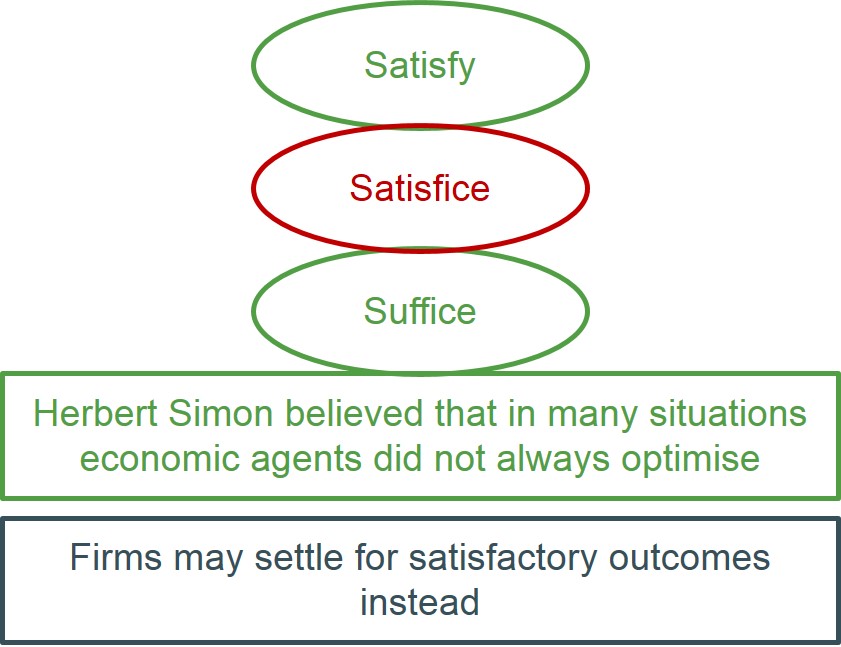Satisficing is a decision-making strategy or cognitive heuristic that entails searching through the available alternatives until an acceptability threshold is met.
Below is an illustration that satisficing always leads to a choice which lies somewhere between a satisfying outcome and one which will suffice i.e. making the best decision a person can make. For instance, an individual wishing to purchase a high quality good with a low price will often find it very difficult to achieve this aim and therefore will often have to buy a high quality product at a price that will suffice or buy a lower quality version of the product that is still satisfactory.
